Republicans propose changes to state of emergency order following bridge collapse
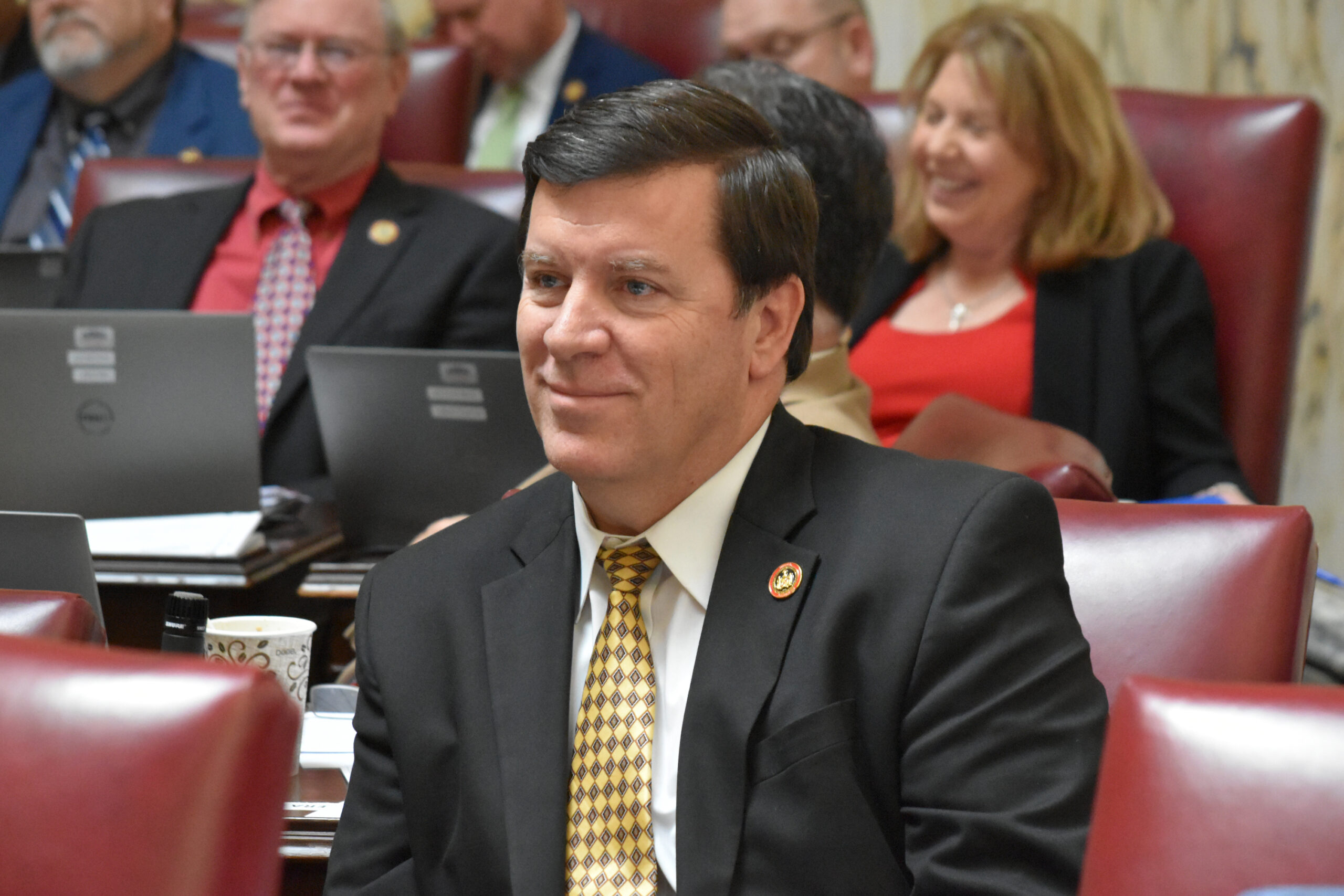
Two state senators are proposing an extension of emergency powers for the governor following the collapse of the Francis Scott Key Bridge.
The bill — introduced Thursday with roughly a week left in the 90-day General Assembly session — comes two days after a massive cargo ship struck the Key Bridge. The 47-year-old span collapsed into the Patapsco River between Baltimore and Anne Arundel counties. The bodies of two workers were recovered Wednesday. Four others are presumed dead. Two survived.
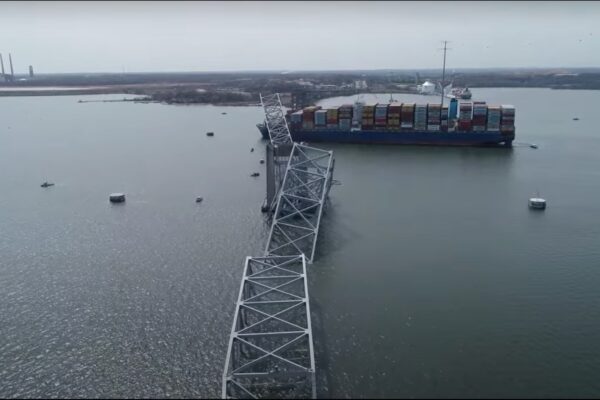
A view of the remains of the Francis Scott Key Bridge. The span collapsed after it was struck by the Dali, a cargo ship registered in Singapore, about 30-minutes after it left the Port of Baltimore. Screenshots from video released March 26, 2024 by the National Transportation Safety Board.
“In Florida, they had a similar structure [collapse] and it took seven years to rebuild it,” said Sen. Bryan Simonaire (R-Anne Arundel). “They actually had two spans where they could continue to use one. We have a daunting task ahead of us.”
Simonaire said he and Sen. Johnny Ray Salling (R-Baltimore County) wanted to focus on a way to allow the state to expedite construction of the bridge while limiting some powers granted by a standard state of emergency declaration.
Gov. Wes Moore (D) declared a state of emergency Tuesday in the hours following the collapse of the bridge.
“There’s a lot of broad, unfettered power” in a state of emergency order, said Simonaire.
“What this bill does is create, conceptually, a limited state of emergency power just for critical infrastructure so they can expedite certain processes and we can get that bridge up quicker,” he said.
Senate Bill 1187 would expand those powers for the limited purpose of the emergency replacement or repair of critical infrastructure, according to a copy obtained by Maryland Matters.
“There’s going to be a tremendous economic impact,” said Simonaire. “We need to get the critical infrastructure back up again. One tool we have in our toolbox is a state of emergency.”
The proposed legislation allows the governor to declare a state of emergency with limited powers for a period of a year in the case of damage to critical infrastructure. The order for infrastructure eliminates some powers including allowing the taking of private property for government use.
“Typically, the General Assembly has set it up that it’s short term. That you can declare it for 30-days unless it’s renewed for another 30-days. That was the intent,” said Simonaire. “What we have here with critical infrastructure is not going to be a 30-day or a 60-day. It could potentially be years.”
The order for infrastructure repair and replacement could be renewed for additional one-year terms. The legislature retains the power to end a state of emergency.
Current law requires a governor to renew a state of emergency every 30 days. That order could be ended by a majority vote of the General Assembly.
There is no current timeline for clearing debris and re-opening the channel near the bridge to ships. The cost and timing for building a new bridge is also underdetermined.
The use of state of emergency powers was controversial during the COVID-19 pandemic. Republicans frequently complained the powers were too broad, infringed on the rights of individuals and small businesses, and were used for too long.
Simonaire said the changes in the bill are limited to critical infrastructure.
The bill is scheduled to be heard Friday at 9 a.m. in the Senate Committee on Education, Energy and the Environment.
The bill is the second in as many days proposed following the collapse of the bridge. On Wednesday, Senate President Bill Ferguson and Del. Luke Clippinger, both Democrats representing the same district in Baltimore City, announced they would sponsor emergency legislation authorizing the governor to use money from the state’s rainy day account to replace wages lost by workers at the port and related businesses. That bill could be introduced as early as Friday.
Feds quickly grant Moore’s request for an initial $60 million
Moore is already moving to make good on President Biden’s promise to aid the state in recovering from the collapse of the bridge as well as paying the cost of replacement.
The governor, in a letter to federal officials Thursday, asked for an initial $60 million to pay for emergency operations and debris removal.
“President Biden and all our federal partners have given Maryland tremendous support as we face an overwhelming tragedy impacting our state, our region and the people of Baltimore,” Moore said in a statement. “This initial emergency relief request is needed for our immediate response efforts, and to lay the foundation for a rapid recovery.”
Within hours of receiving the request, the Federal Highway Administration announced that it was making $60 million in “quick release” Emergency Relief funds for the Maryland Department of Transportation to begin rebuilding the bridge. Federal officials described the money as a down payment toward initial costs, and said additional Emergency Relief program funding will be made available as work continues.
“No one will ever forget the shocking images of a container vessel striking the Francis Scott Key Bridge, causing its collapse and the tragic loss of six people,” said U.S. Transportation Secretary Pete Buttigieg, who oversees the highway agency. “The federal emergency funds we’re releasing today will help Maryland begin urgent work, to be followed by further resources as recovery and rebuilding efforts progress. President Biden has been clear: the federal government will do everything it takes to help rebuild the bridge and get the Port of Baltimore back open.”
Federal officials said the Federal Highway Administration is also providing technical assistance, conducting site assessments, and administering emergency contracts for the new bridge.
Biden, in the hours following the collapse, vowed the federal government would pay for the full cost of replacing the bridge. He and members of his administration also promised other aid.
Sydnor blasts racist comments
Sen. Charles E. Sydnor III (D-Baltimore County) said the bridge collapse has highlighted misinformation from people not from Maryland such as Utah Republican gubernatorial candidate Phil Lyman, who blamed the tragedy on diversity, equity, and inclusion (DEI).
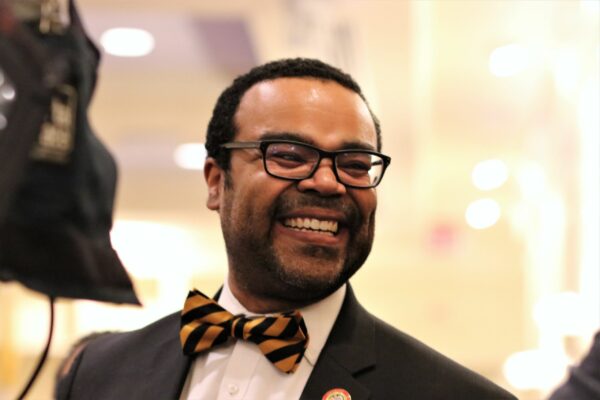
Sen. Charles E. Sydnor III (D-Baltimore County). Photo by Danielle E. Gaines.
Sydnor called their words “offensive.”
For instance, Lyman responded to a post on X, the social media platform previously known as Twitter, from the Young Conservation Federation. The organization posted pictures that include Karenthia A. Barber and Sandy A. Roberts, both appointed last year by Gov. Wes Moore (D) to the Maryland Port Commission. Both Barber and Roberts are Black.
“This is what happens when you have Governors who prioritize diversity over the wellbeing and security of citizens,” Lynn posted on his X feed Tuesday. Anthony Sabitini, a Florida Republican running for Congress, posted on X a video of the bridge collapsing and said, “DEI did this.”
Baltimore Mayor Brandon Scott (D), who is also Black, was the target of suggestions on social media that he won his position because of race.
Scott was elected with 70% of the vote in 2020 and is running for reelection this year in a majority-Black city.
“I know and we all know, and you know very well that Black men and young Black men in particular have been the boogeyman for those who are racist and think that only straight wealthy white men should have a say in anything,” Scott said Wednesday evening during an appearance with Joy Reid on MSNBC. “What they mean by DEI is duly elected incumbent. We know what they want to say but they don’t have the courage to say the N-word.”
As for Sydnor, he calmly expressed his frustration on the Senate floor Thursday.
“It does not matter to some of these people that the aforementioned were duly appointed or duly elected,” he said. “Why? Because many of these folks don’t believe that me and my colleagues should hold the offices that we hold, or even should be voting in the first place.”
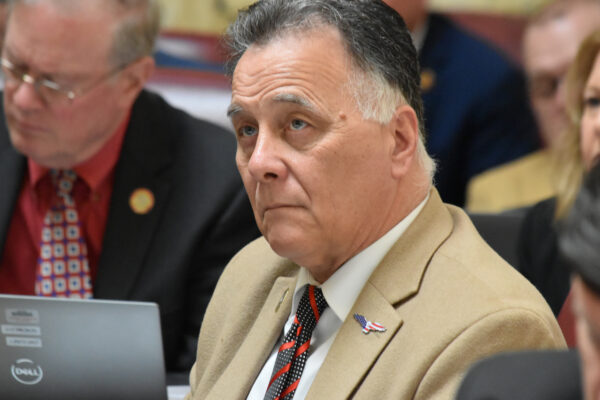
Sen. Johnny Ray Salling (R-Baltimore County). Photo By Bryan P. Sears.
He continued: “I bring this up because what is old is new. Some people did not like reconstruction policies. Black people’s competency was attacked back then, as it is today, as if we do not have to work just as hard as anyone else to achieve the American dream. I cannot tell you how frustrated that I am that these people stain a tragedy that we are all attempting to address with such bigotry.”
Salling, who represents the district where the northern portion of where the Francis Scott Key Bridge landed, thanked the governor for making work to repair the bridge “personal.”
“In the eyes of God, we are all the same. I’m joined hand-in-hand with every person in here because every person means something to me,” Salling said.
After the Senate adjourned, Salling walked over to Sydnor near the rostrum and shook hands. Then they hugged each other.
This story has been updated to reflect that the federal government has made an initial $60 million available to the state in the wake of the disaster.
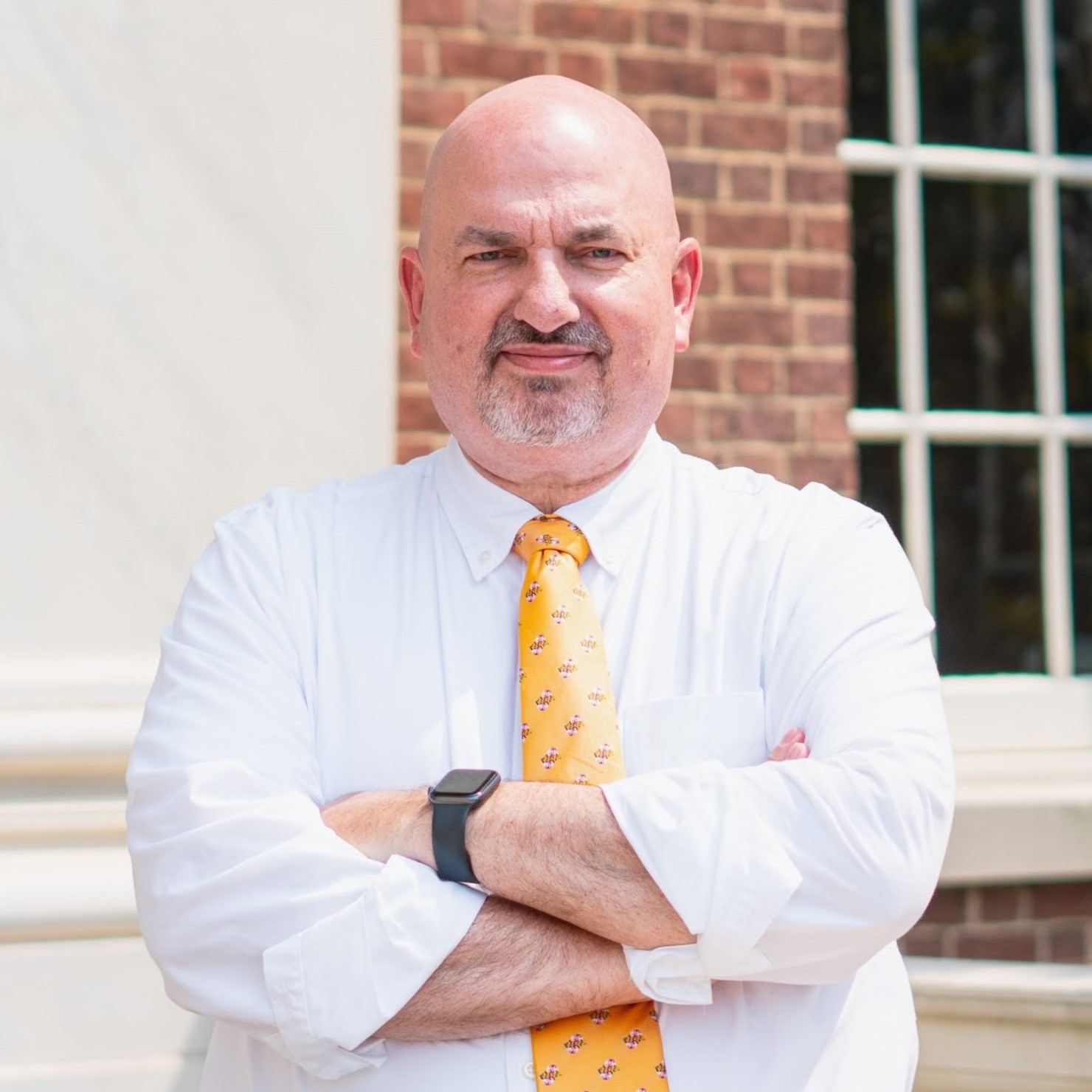
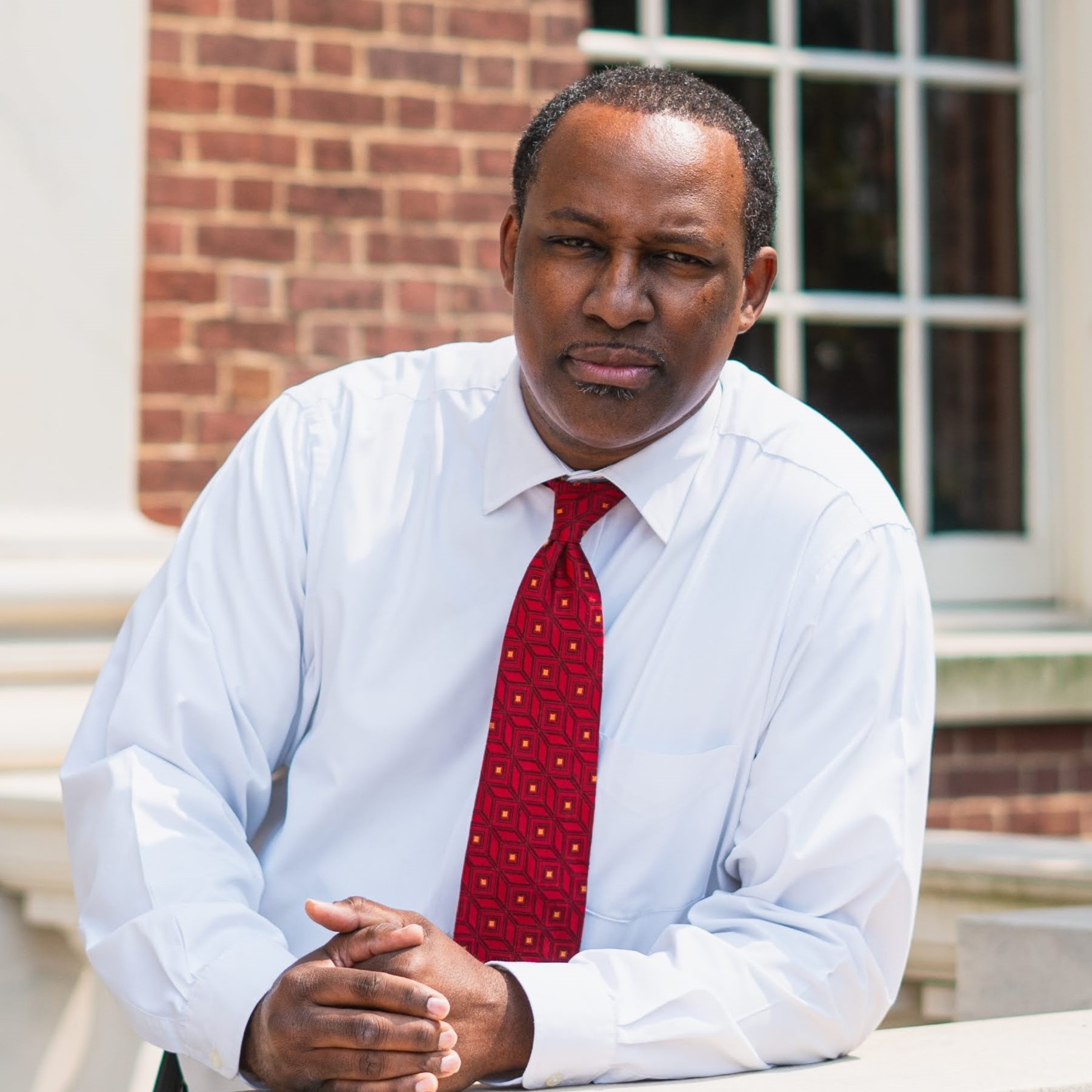


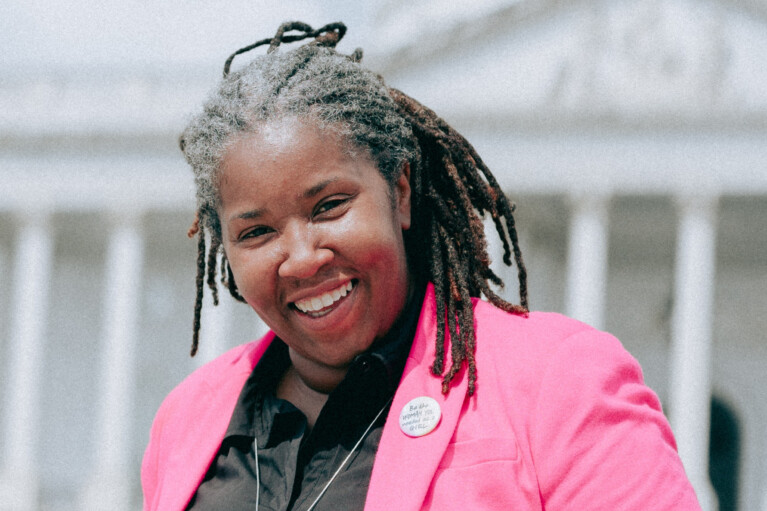
 Creative Commons Attribution
Creative Commons Attribution